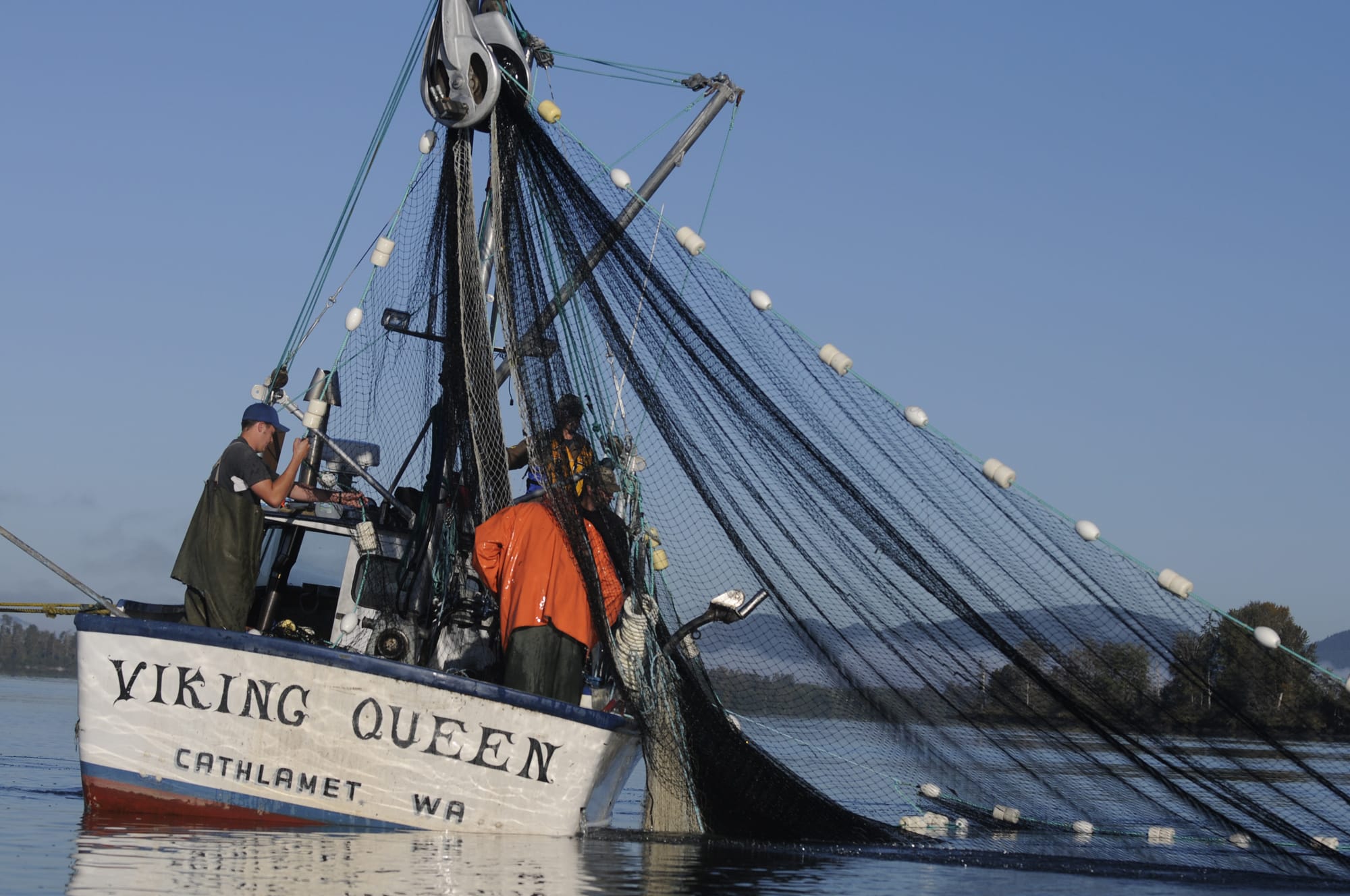The Oregon Department of Fish and Wildlife is proposing a “strategic rebalance” of the landmark 2012 Columbia River salmon management reforms, including continuation of gillnetting for fall chinook between Woodland and Beacon Rock.
The department’s recommendations will be presented to the Oregon Fish and Wildlife Commission in a one-topic, all-day meeting beginning at 8 a.m. Wednesday at the Department of Fish and Wildlife headquarters, 4034 Fairview Industrial Drive, Salem.
In late 2012 and early 2013, the Washington and Oregon commissions adopted the biggest overhaul of Columbia River salmon policies in seven decades.
Jump-started by former Oregon Gov. John Kitzhaber, the policies called for allocating more chinook salmon to sportsmen in the main Columbia and restricting gillnetting to off-channel sites like Youngs Bay near Astoria.
Those off-channel spots were stocked with more chinook and coho and additional off-channel locations researched.
Commercial fishing that remained in the main Columbia was to be done with live-capture methods — such as purse seines and beach seines — designed to harvest hatchery stocks and release wild fish. Gillnets were to be eliminated.
A four-year transition period from 2013 through 2016 was established, with full implementation scheduled for 2017.
However, with 2017 fewer than two months away, both states are reviewing the four-year transition period and looking ahead.
Among recommendations for 2017 developed by the Oregon Department of Fish and Wildlife are:
• Continue the allocation shifts of spring chinook and summer chinook from the current 70 percent sport-30 percent commercial to 80 percent sport starting next year.
• Maintain the current split of 70 percent sport-30 percent commercial for fall chinook, which are the most important stock in terms of economics for the commercial fishery. Gillnetting for fall chinook would continue from the mouth of the Lewis River to Beacon Rock.
• Establish a “conservation set-aside,’’ which would be Endangered Species Act impacts used to maximize removal of hatchery-origin chinook and coho in the Columbia River downstream of the Lewis River.
For the commercials, the conservation set-aside fishing would be with non-gillnet gear. For sportsmen, the conservation set-aside angling would allow retention of only fin-clipped chinook and coho.
• Release of more salmon in off-channel areas, including a new site at Westport Slough in Oregon to accommodate an additional 250,000 spring chinook. Oregon also plans to release an additional 500,000 spring chinook at Gnat Creek Hatchery to augment existing off-channel sites.
Oregon also is recommending Washington develop an off-channel commercial site in Coal Creek Slough west of Longview and shift the 250,000 spring chinook now released in Cathlamet Channel to Coal Creek Slough.
• Commercial fishing for spring chinook in the main Columbia could only occur after the run forecast is made in early to mid-May and only tangle nets or other alternative gear could be used.
• Remove the barbless hook requirement for the lower Willamette River.
• Commercial fishing for summer chinook salmon in the lower Columbia would be allowed only by non-gillnet selective gears and techniques.. If the commercials can not use fully their summer chinook allocation, it could be transferred to sport fishing upstream of Bonneville Dam or left unharvested to aid in spawning escapment.
• Remove the Youngs Bay “control zone,’’ a sport-fishing closure area during August and early September outside the mouth of Youngs Bay in Astoria.
The Oregon meeting agenda and supporting materials are online at http://www.dfw.state.or.us/agency/commission/minutes/16/11_nov/index.asp.
Because of the large amount of information ODFW staff has to share, and the anticipated volume of public testimony, the Columbia River fisheries reform update is the only agenda item.
There will be no action taken as the agenda item is informational only.
However, the commission anticipates making final decisions for the Columbia River fisheries reform in December.




